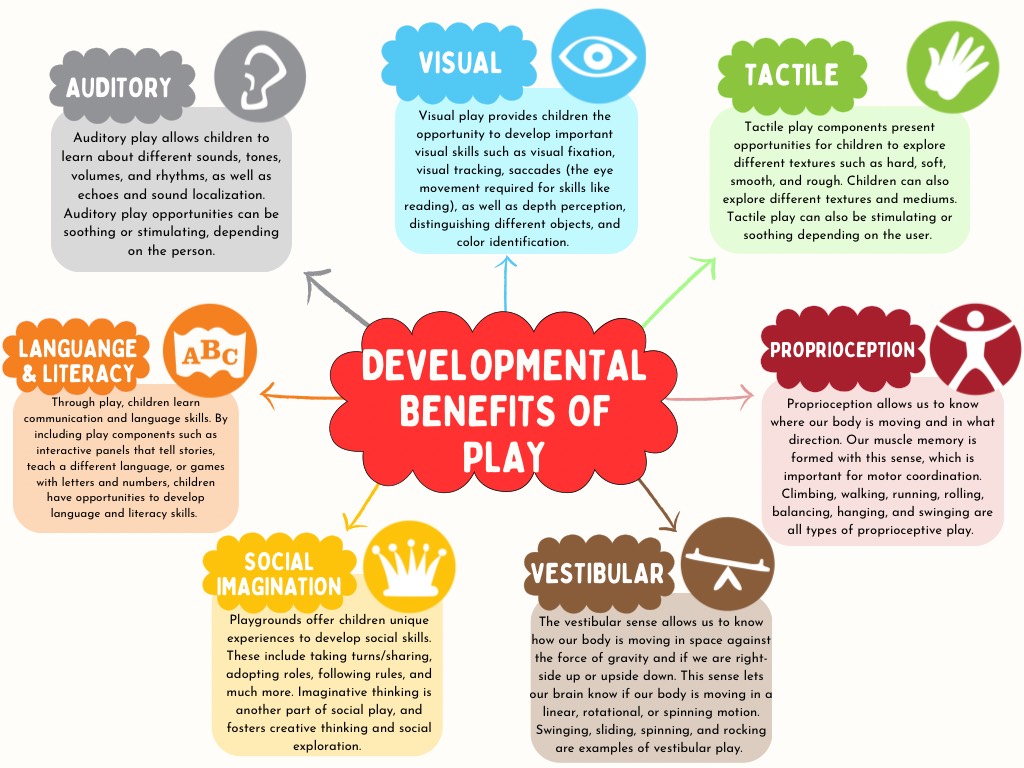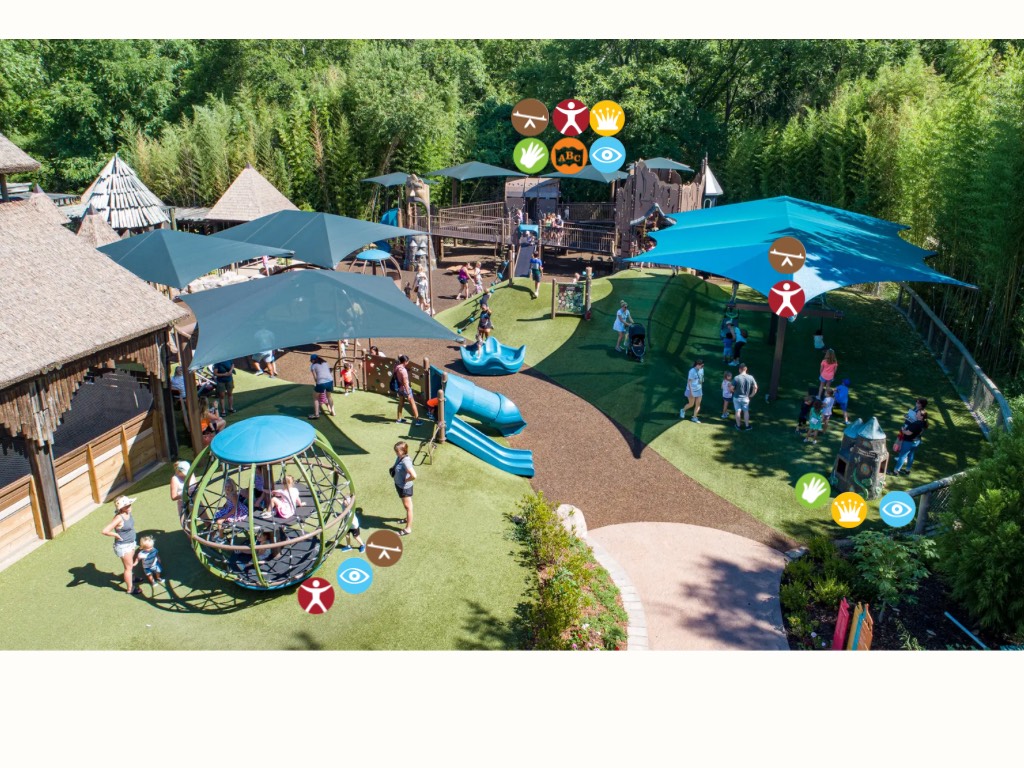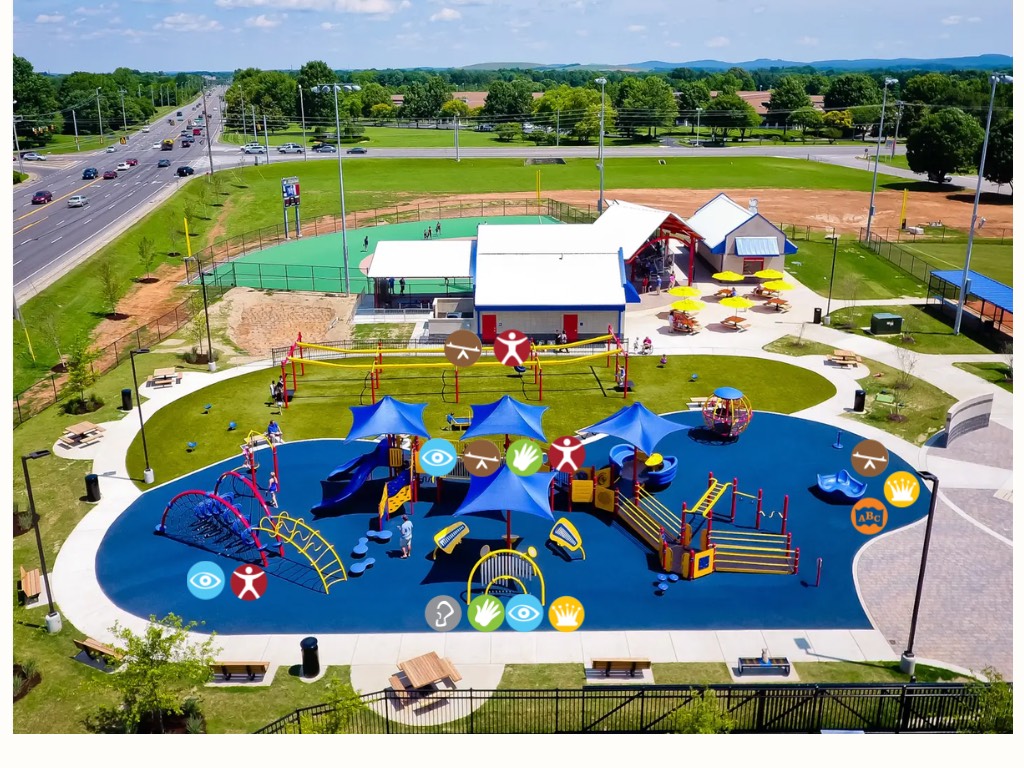

What is Inclusive Play?

Inclusive play spaces allow children and adults of all abilities to enjoy play experiences while making connections and growing closer together. The UN High Commission on Human Rights has declared play as a fundamental right for all children, so the presence of inclusive playgrounds is incredibly important. Inclusive playgrounds allow for equitable access to diverse play opportunities that present a “just-right” challenge, regardless of their abilities. Inclusive playgrounds are intended to break down physical, social, and emotional barriers so that everyone is able to access and enjoy the inclusive play space. Inclusive play spaces are a complex concept that are unique to the area they exist in. Over the years, we have seen improvements and progression in the world of inclusive play. Click here to learn about the history of inclusive play.
Creating an inclusive community
Oftentimes, accessibility and inclusivity are used exchangeably. However, there are significant differences between the two. Accessible playgrounds ensure that children and their families are able to enter and navigate the playground. Accessible playgrounds meet the needs of users with mobility impairments who explore the world with the use of a mobility device. However, accessibility is just a part of the equation to create an all-inclusive playground. Inclusive playgrounds not only meet, but exceed ADA requirements because these standards are mere minimums for accessibility. They also implement the principles of universal design to help maximize usability and inclusion. Therefore, individuals with physical, cognitive, sensory, and/or any other impairments are able to interact with multiple types of play components that meet their individual needs. If you are interested in learning more about inclusive play design, click here.





For a better tomorrow, we play today
A whole lot more goes into playing on a playground. In fact, play supports a child’s physical, cognitive, social, and emotional development, all while simultaneously creating positive memories and experiences! We have identified seven main developmental benefits connected to play. If you would like to learn more about the benefits of inclusive play, click here.
History of Inclusive Play
Playground aesthetics have evolved over the years, with formal guidelines recognizing individuals with disabilities now in place. The Americans with Disabilities Act (ADA) became law in 1990, prohibiting discrimination against those with disabilities in public life, including playgrounds. An ADA-compliant playground must have wheelchair ramps or barrier-free travel routes, offer diverse accessible play options, and ensure a suitable surface beneath all accessible equipment.

